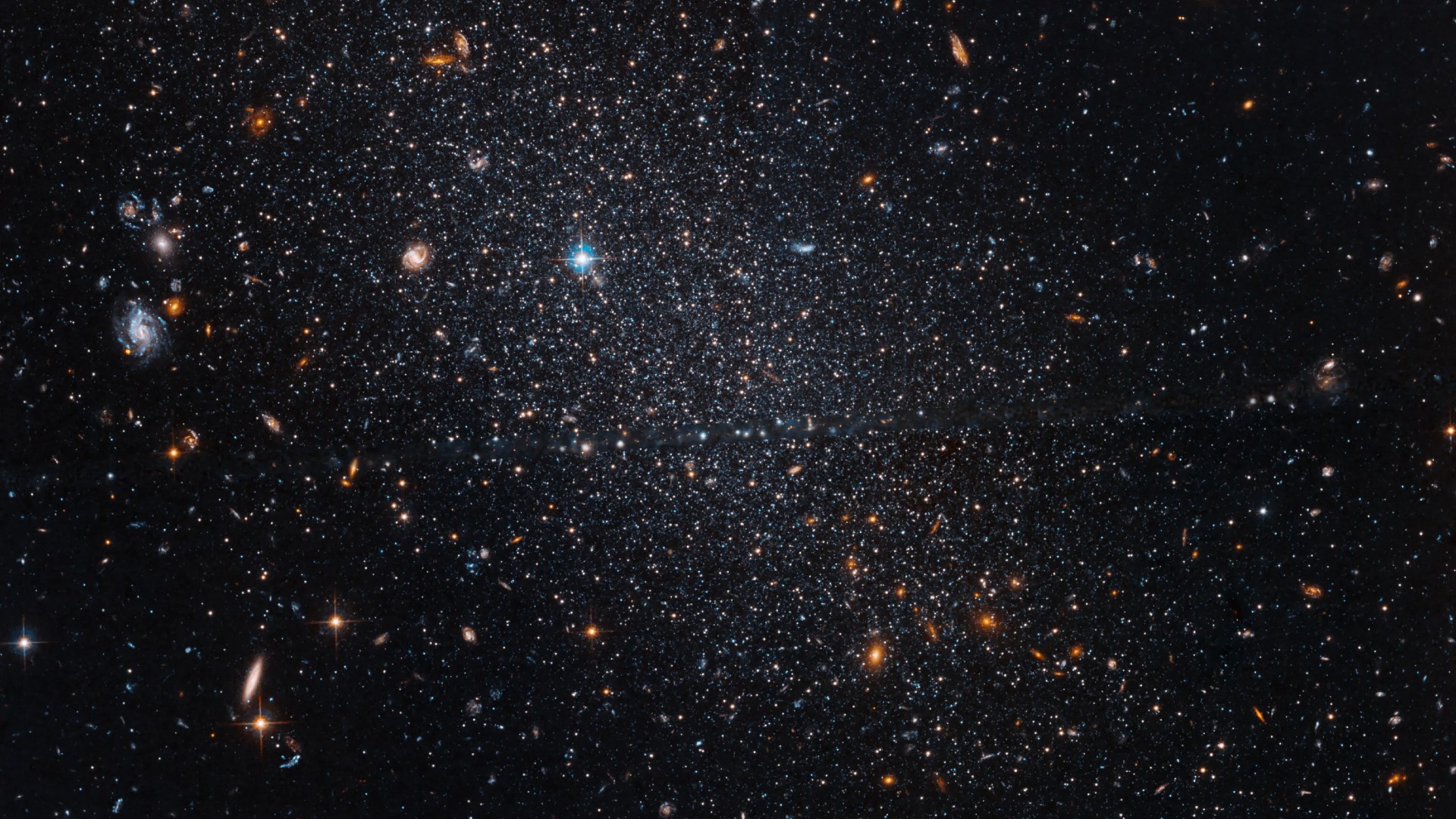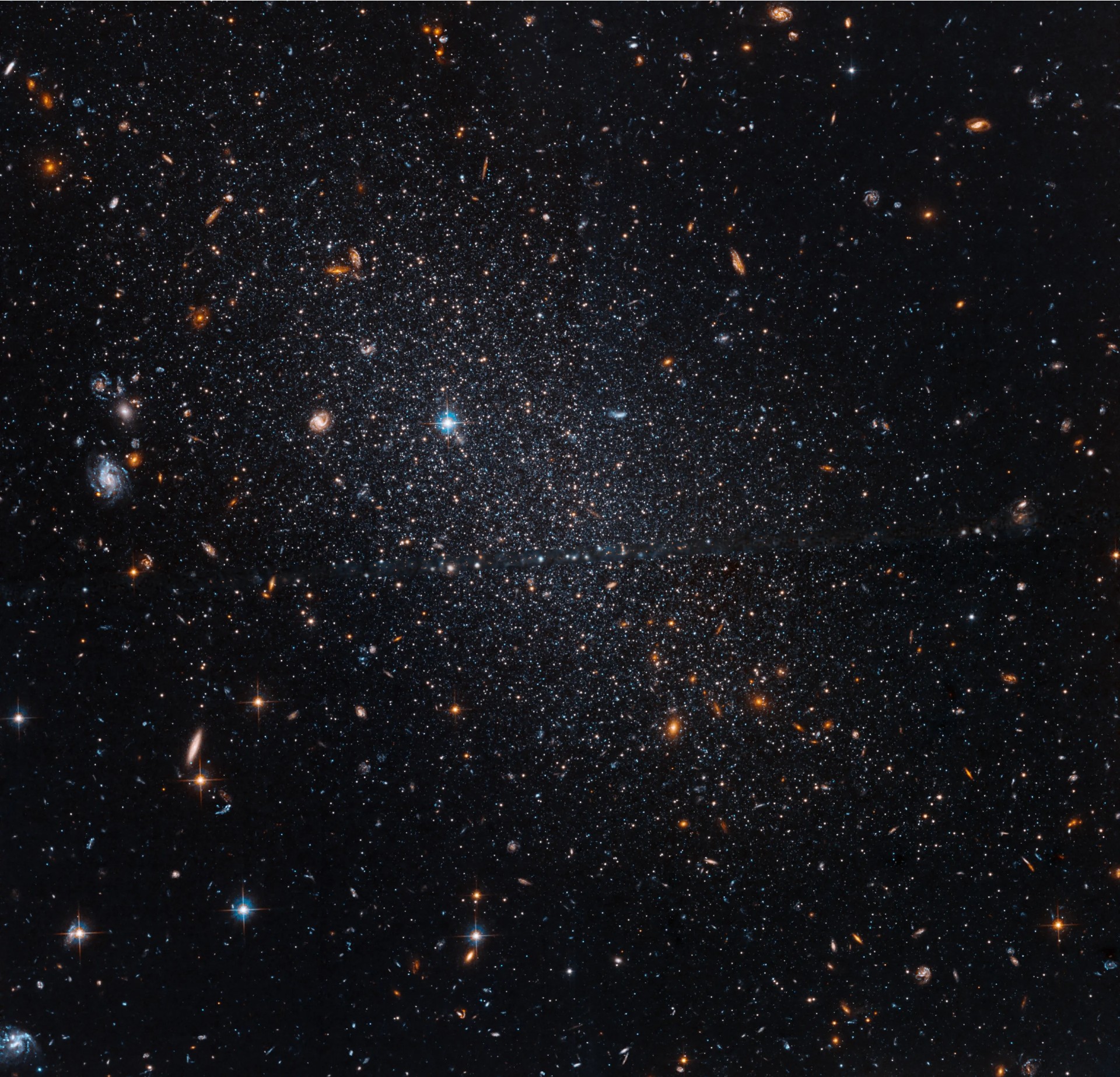Hubble telescope spies a sparkling 'cosmic fossil' 3 million light-years away (image)
The Hubble Space Telescope has uncovered an isolated cosmic fossil, which may offer new insight on galaxy formation.

The Hubble Space Telescope has uncovered an isolated cosmic fossil, which may offer new insight on galaxy formation.
Located about 3 million light-years from Earth, the Tucana Dwarf galaxy sits at the far edge of the Local Group of galaxies, which includes our Milky Way galaxy. This galaxy is home to older stars, leading researchers to believe it may contain traces from the early universe, according to a statement from NASA.
"Having such pristine properties enables scientists to use the Tucana Dwarf as a cosmic fossil," NASA officials said in the statement releasing the new image on Aug. 23.
Hubble's sparkly new view of the Tucana Dwarf galaxy captures billions of shimmering stars against the dark backdrop of space. While these stars appear to shine brightly in the new image, they are actually relatively dim due to their age. Scientists refer to this type of galaxy as a dwarf spheroidal galaxy, which describes smaller galaxies with a low-luminosity, very little dust and an older stellar population.
Related: Hubble Space Telescope finds closest massive black hole to Earth — a cosmic clue frozen in time

"As a dwarf spheroidal galaxy, it is much smaller and less luminous than most other dwarf galaxies," NASA officials said in the statement. "Dust is sparse and the stellar population skews towards the older range, giving them a dimmer look."
The Tucana Dwarf galaxy is located about 3.6 million light-years from the Local Group's center of mass, which is quite far from the Milky Way and other galaxies. Researchers have suggested that the Tucana Dwarf galaxy may have receded to this secluded corner of the cosmos after a close encounter with a larger galactic neighbor, Andromeda, roughly 11 billion years ago. The gravitational forces created by such an interaction would have flung the smaller companion (which, in this case, was the Tucana Dwarf galaxy) to a further distance, according to the statement.
Get the Space.com Newsletter
Breaking space news, the latest updates on rocket launches, skywatching events and more!
"Dwarf galaxies could be the early ingredients for larger galaxies, and with older stars residing in such an isolated environment, analyzing them can help trace galaxy formation back to the dawn of time," NASA officials said in the statement.
Hubble was able to peer across the Local Group to view the distant Tucana Dwarf galaxy using its Advanced Camera for Surveys and Wide Field and Planetary Camera 2. Studying the galaxy's structure, composition and stellar evolution will help researchers better understand the epoch of reionization, when the first stars and galaxies formed billions of years ago.
Join our Space Forums to keep talking space on the latest missions, night sky and more! And if you have a news tip, correction or comment, let us know at: community@space.com.

Samantha Mathewson joined Space.com as an intern in the summer of 2016. She received a B.A. in Journalism and Environmental Science at the University of New Haven, in Connecticut. Previously, her work has been published in Nature World News. When not writing or reading about science, Samantha enjoys traveling to new places and taking photos! You can follow her on Twitter @Sam_Ashley13.
